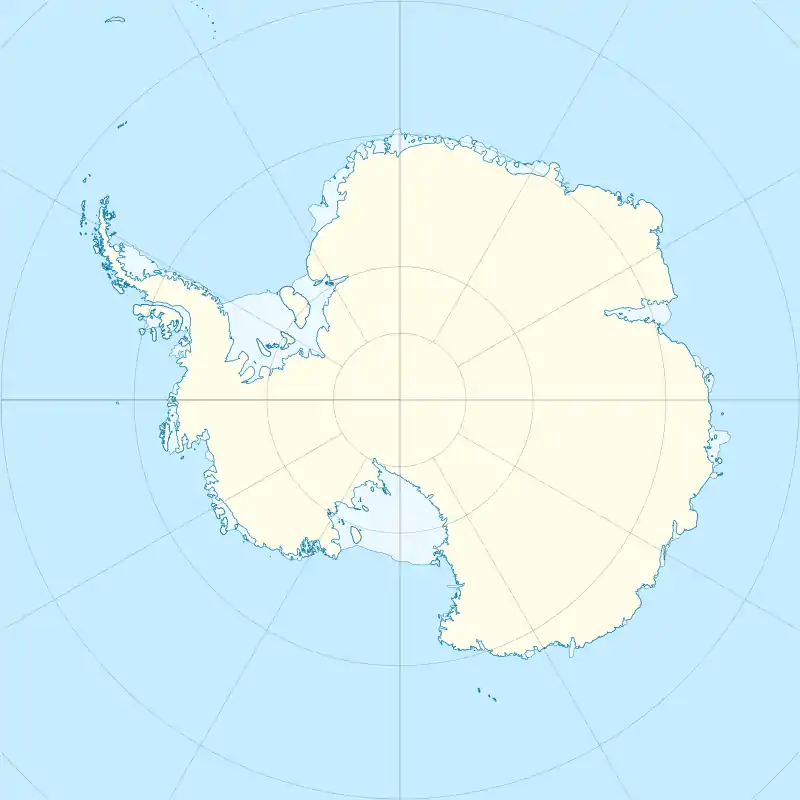Berkley Island
Berkley Island (66°13′S 110°39′E) is an island, 1 km long, which marks the north-eastern end of the Swain Islands. It was first mapped from air photos taken by U.S. Navy Operation Highjump, 1946–47, and was included in a survey of the Swain Islands in 1957 by Wilkes Station personnel under Carl R. Eklund. It was named by Eklund for Richard J. Berkley, a geomagnetician with the US-IGY wintering party of 1957 at Wilkes Station.[1]
 Berkley Island Location in Antarctica | |
| Geography | |
|---|---|
| Coordinates | 66°13′S 110°39′E |
| Archipelago | Swain Islands |
| Length | 1 km (0.6 mi) |
| Administration | |
| Administered under the Antarctic Treaty System | |
| Demographics | |
| Population | Uninhabited |
Important Bird Area
The island, along with neighbouring Cameron Island, the intervening sea and smaller islets, has been identified as a 97 ha Important Bird Area by BirdLife International because it supports some 14,000 pairs of breeding Adélie penguins (as estimated from January 2011 satellite imagery). It lies about 9 km east of Australia's Casey Station.[2]
See also
References
- "Berkley Island". Geographic Names Information System. United States Geological Survey, United States Department of the Interior. Retrieved 2011-06-08.
- "Berkeley Island / Cameron Island". BirdLife Data Zone. BirdLife International. 2015. Retrieved 25 October 2020.
External links
 This article incorporates public domain material from "Berkley Island". Geographic Names Information System. United States Geological Survey.
This article incorporates public domain material from "Berkley Island". Geographic Names Information System. United States Geological Survey.